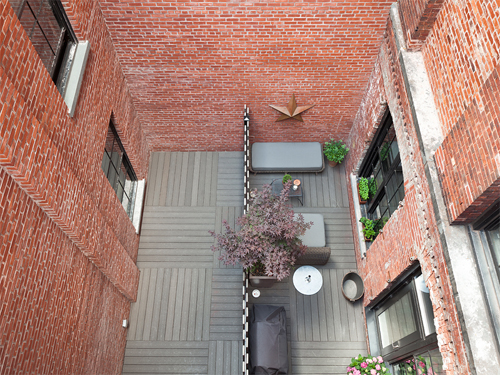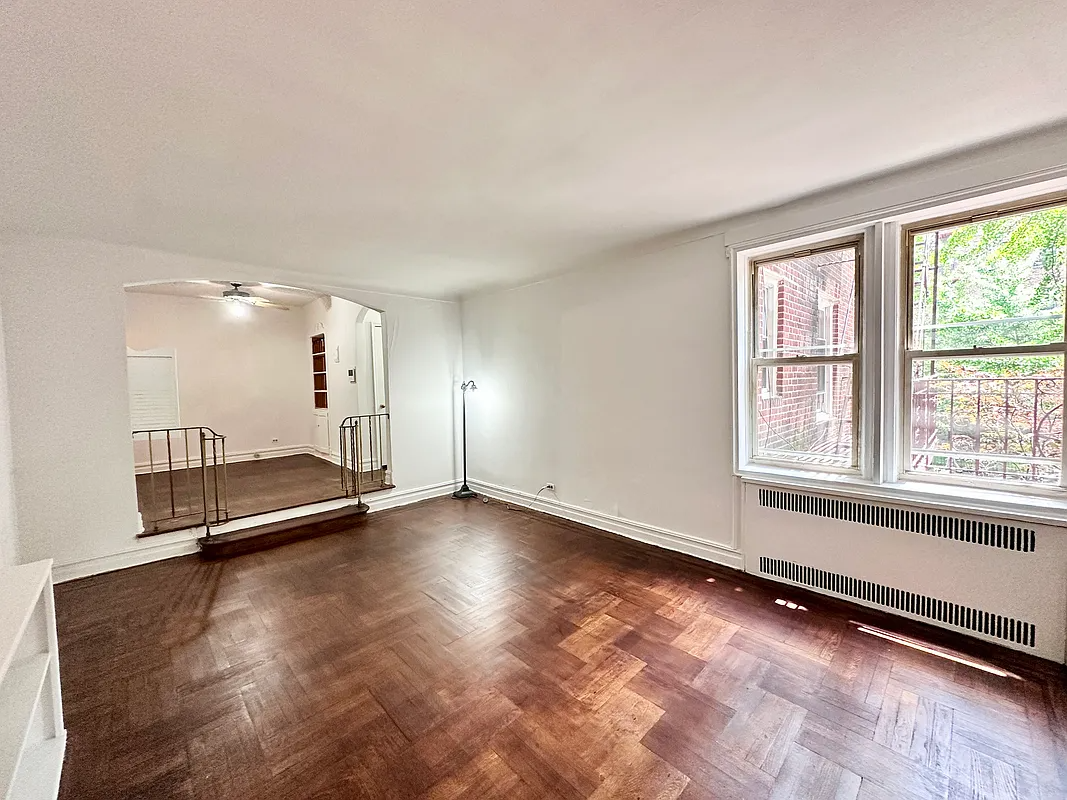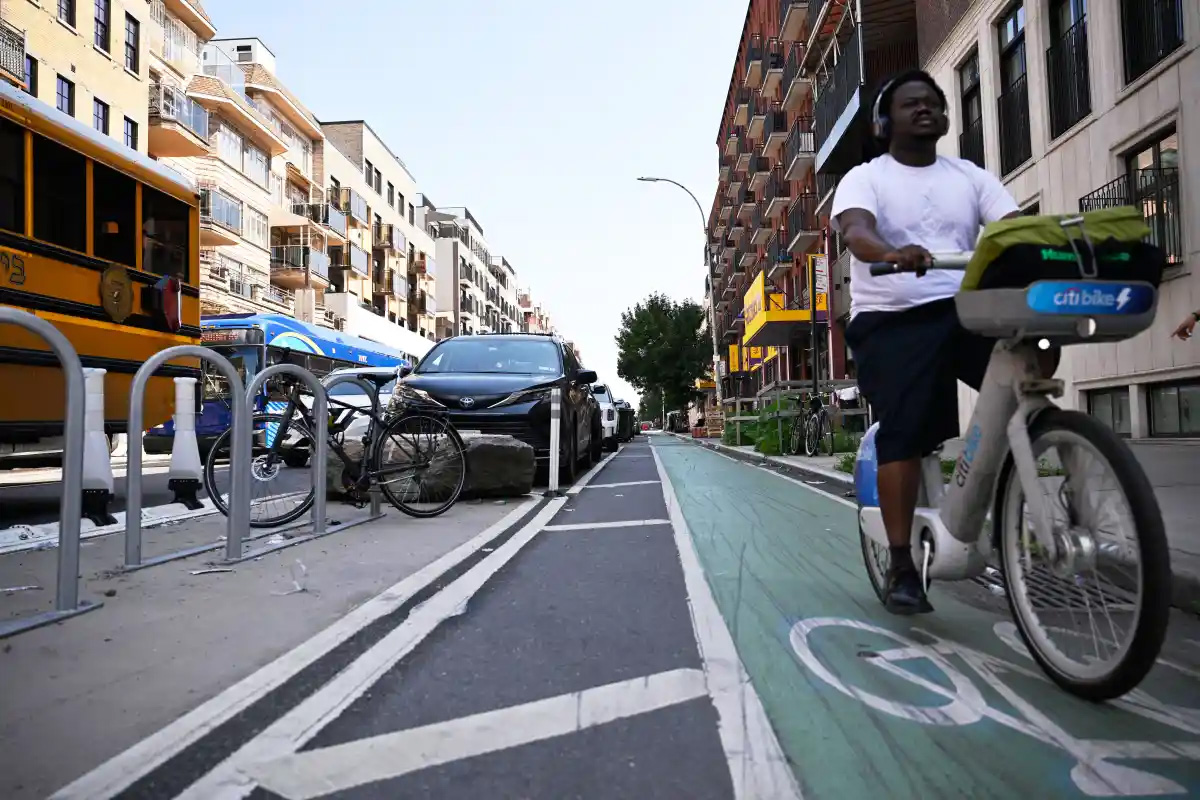The Hot Seat: Sam Charney
Welcome to the Hot Seat, where we talk with folks who work in Brooklyn real estate, development, architecture, and the like. Introducing Sam Charney, the project executive at Two Trees. He has most recently worked on the Dumbo rental development 25 Washington. Brownstoner: What neighborhood do you currently live in, and how’d you end up…


Welcome to the Hot Seat, where we talk with folks who work in Brooklyn real estate, development, architecture, and the like. Introducing Sam Charney, the project executive at Two Trees. He has most recently worked on the Dumbo rental development 25 Washington.
Brownstoner: What neighborhood do you currently live in, and how’d you end up there?
Sam Charney: The East Village. I’ve been there for about 8 years. When I moved back to the city after college I wanted to be in a neighborhood that was still a little rough around the edges, somewhere that had the character of the city I remembered from the 80’s and mid 90’s. The East Village and Lower East Side have managed to maintain cultural diversity, mom and pop stores, and the grittiness New York was once famous for, despite the pressure of gentrification and big box retailers.
BS: Can you talk about how you ended up in real estate development?
SC: I was an art history major in college. Through my studies I began to focus more on architecture and the aesthetics of the built world. When I graduated I thought I wanted to be an architect or a planner. The summer after I graduated from Bates College, I enrolled in the “Career Discovery Program” at the Harvard Graduate School of Design for students who were interested in pursuing a career in architecture or planning. I quickly realized that I was nowhere near as talented in the visual arts as my fellow students and colleagues. At that point I knew I still wanted to play a role in how cities were built, but wasn’t sure in what capacity and knew that architecture / planning school was not the answer. I went back to my dorm room, read one of my course books that evening, and discovered the developer’s role in the design process. It was a eureka moment. I loved that the developer could play a role in all aspects of the design process, as well as the municipal approval process, and construction. He was essentially the producer of the movie and the project’s livelihood relied exclusively on his ability to manage the process and make things happen. The idea of having direct control over my personal success or failure was extremely appealing to me.
After the jump, Sam talks about roadblocks in development, working with the LPC and why Brooklyn Bridge Park will be the Central Park of our generation…
BS: You’re there to conceptualize major developments from the very beginning. What are the most common roadblocks you face in making your plans materialize?
SC: The first common roadblock I usually encounter with a rehabilitation project is that most of the conversions are occupied, or we haven’t closed on them when we start the design development process. If you are lucky, there is an old disheveled set of drawings at Department of Buildings that your architects and engineers can work off of, however, in most cases, we are trying our best to approximate column spacing, point of entry of services, and elevations based on exterior property line surveys and a few test pits / cuts that we are allowed to make. Same goes for quality of soil, water tables, and structural footings under columns and foundations. You really just have to take your best guess based on a few calculated tangential facts from geo-tech engineers and your other professionals before you can get in there to start demolition and finally unearth a lot of the elements that have been covered up for 100 years.
BS: Can you speak on projects you’re currently working on now?
SC: I am currently finishing up 25 Washington Street, also known as Gair 2. It’s a 106 unit, 20% affordable building in DUMBO. We demolished a large portion of the back of the building to create an inner courtyard, and took that bulk and put it on top of the existing structure in the form of 2 additional stories. The reconfiguration of the bulk allowed for legal light and air on the back of the building, and the ability to maximize the incredible views afforded to the building due to its position directly on the water and Fulton Ferry Park. We were also able to make very efficient use of the space by carving out the rear courtyard. The building has one of the most spectacular public roof decks of any building I have ever seen, and it is open to all tenants who reside there.
BS: How much of your job involves working with LPC and the community itself? How do you strike a balance between working with a developer and the LPC, within the context of the neighborhood and with the residents of the neighborhood?
My last 5 projects have been in historic districts so I am very familiar with LPC and the local communities in DUMBO, Cobble Hill, and Brooklyn Heights. I think because the scale is so low in Brooklyn and thus the density pretty low per square foot, communities are tighter and smaller than they are in Manhattan. This can be a really good thing or a negative externality depending on who is evaluating and giving recommendations. In general I am a firm believer in a think tank atmosphere, and that the more opinions the better, but sometimes people can act in their own interests rather than the in the broader interests of the community at large, and it can be tragic for a community when one representative hijacks the sentiments of an entire community board.
That being said, I think most of the representatives on the local community boards and land use committees are highly intelligent, municipally oriented people who are focused on the public good of their local community. I have worked personally with CB2 and have found all of my interactions with them to be quite fair and pleasant.
I think the same can be said for the Landmarks Preservation Commission. There are a lot of really talented people working at LPC, and for the most part they are a thoughtful, sensitive, and proactive body. I think if you approach LPC openly about what you plan on doing and ask them for design suggestions and direction they are quite sensible and fair. Ultimately, if more developers approached LPC before they started design development everyone would win, from the developer all the way down to the local community. My only critique would be that there needs to be more integration between the various city agencies one must deal with when undertaking a construction project in the city. The department of buildings, LPC, FDNY, CPC, and community boards and city council should all be integrated and have designated liaisons and coordination offices so you are not getting contradictory information from different agencies. That’s probably one of the most frustrating parts of developing in the city, and we need to make the approval process easier so New York can continue to be on the cutting edge of building more housing, and in turn making that housing affordable, cleaner and greener. Government subsidies play a large role in that process, and I hope that the city continues to support J51 and revisits the 421A to make sure it is still economically viable for developers to create more housing in the outer boroughs.

Inner Courtyard at Gair2
BS: And finally, your favorites: top Brooklyn neighborhood, fave new development, and favorite property-not listed by your company-on the market.
SC: My favorite Brooklyn neighborhood is really a nexus point at which two of my favorite neighborhoods Park Slope and Prospect Heights meet which is at Grand Army Plaza. I love the Plaza itself and Brooklyn’s own Arc de Triomphe. The farmer’s market is great, the Brooklyn Museum is wonderful, the botanical gardens are gorgeous, the public library a symbolic piece of architecture to all Brooklynites, and the majestic prewar coops on the plaza and on Eastern Parkway a sign of Brooklyn’s more affluent times. It has Prospect Park, and an amazing conglomeration of ethnic diversity as is evident from the yearly West Indian parade. The Plaza is as symbolic to Brooklynites as the promenade or the bridges, and most Brooklynites from past generations still remember the plaza for all its symbolism and glory. To me it’s the literal heart of Brooklyn.
My favorite new development is not a building, but rather a park. It’s the ongoing development of Brooklyn Bridge Park. I think the city has done a wonderful job of repositioning underutilized waterfront spaces, from the Hudson River Park, to the revitalization of Fulton Ferry Park and the new development of Brooklyn Bridge Park. When the city has finally completed Brooklyn Bridge Park I believe it will be the Central Park of our generation. The landscaping is wonderful, the circulation well thought out, and the programming seems to be in line with what the local communities wanted. I think when completed and connected this Park will be a very special piece of so many Brooklynite’s lives. Parks effect the urban landscape more than any new building can. They provide respite and nature to what can sometimes be a cold and stark urbanity. They are good for the soul, and who didn’t love to run in the sprinklers in a bathing suit and jellies as a kid?
Favorite rental property on the market: 2 Cooper Square, I really like the exterior design and that rooftop swimming pool is a dream come true to all urban renters in the summer.
Condos: I haven’t seen much Condo product recently that I like, but I know that apartments are still available at 1 Grand Army Plaza. I really like Richard Meier and who can argue with the views?

Sam’s first project, the rehabilitation of 164 Atlantic Avenue, a 1859 warehouse. The project won a Brooklyn Building Award for best adaptive reuse.






Dave has a good point, these manhattan types look at Brooklyn like wide-open Pampas, barely settled woodland.
Only a developer would bemoan that Brooklyn is so low-scale and lacks density. These guys would turn the whole city into the Financial District if zoning and landmarks and the communities themselves did not stop them. Brooklyn is an incredibly dense, built-up city. DUMBO is composed mostly of high-rises. Simply because those existing buildings are not 45 stories high does not make them “low-scale”. In any other city in the world they would be considered enormous buildings.
Hint: the completion of Brooklyn Bridge Park would happen faster if mega-bucks developers contributed cash money to the BBPC.